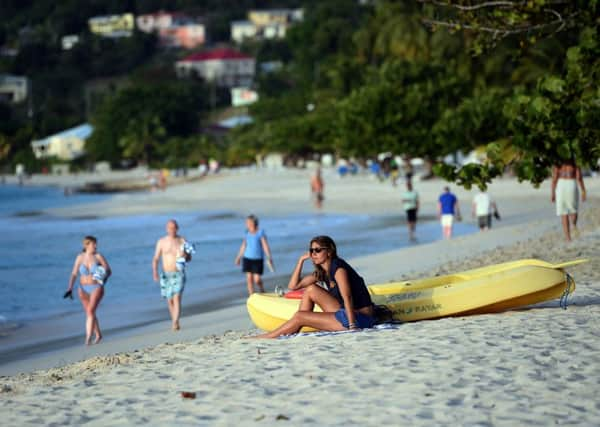Stinking decaying seaweed scar Caribbean beaches


Clumps of the brownish seaweed known as sargassum have long washed up on Caribbean coastlines but researchers say the algae blooms have exploded in extent and frequency in recent years.
This year’s seaweed invasion appears to be a bumper crop, with a number of shorelines so severely hit that some tourists have cancelled summer trips and the Tobago government has labelled it a “natural disaster”.
Advertisement
Hide AdAdvertisement
Hide AdFrom the Dominican Republic in the north, to Barbados in the east, and Mexico’s Caribbean resorts to the west, officials are authorising emergency money to fund clean-up efforts and clear stinking mounds of seaweed that in some cases have piled up nearly 10ft high on beaches, choked scenic coves and cut off moored boats.
With the start of the region’s high tourism season a few months away, some officials are calling for an emergency meeting of the 15-nation Caribbean Community, worried that the worsening seaweed influx could become a chronic problem for the world’s most tourism-dependent region.
“This has been the worst year we’ve seen so far. We really need to have a regional effort on this because this unsightly seaweed could end up affecting the image of the Caribbean,” said Christopher James, of the Tobago Hotel and Tourism Association.
There are various theories about what is causing the seaweed boom that scientists say started in 2011, including warming ocean temperatures and changes in the ocean currents because of climate change.
Some researchers believe it is primarily due to increased land-based nutrients and pollutants washing into the water, including nitrogen-heavy fertilisers and sewage waste.
Brian Lapointe, a sargassum expert at Florida Atlantic University, said severe influxes such as those seen recently are “harmful algal blooms” because they can cause fish kills, beach fouling, tourism losses and even coastal dead zones.
Mr Lapointe said: “Considering that these events have been happening since 2011, this could be the ‘new normal’.”
The mats of drifting sargassum covered with berry-like sacs have become so numerous in the Caribbean Sea and the Atlantic Ocean they are even drifting as far away as to West Africa, where they have been piling up fast in Sierre Leone and Ghana.
Advertisement
Hide AdAdvertisement
Hide AdSargassum, which gets its name from the Portuguese word for grape, is a floating brownish algae that generally blooms in the Sargasso Sea, a two million-square-mile body of warm water in the North Atlantic that is a major habitat and nursery for numerous marine species.
Like coral reefs, the algae mats are critical habitats and mahi-mahi, tuna, billfish, eels, shrimp, crabs and sea turtles all use the algae to spawn, feed or hide.
But some scientists believe the sargassum besieging a growing number of beaches may actually be due to blooms in the Atlantic’s equatorial region, perhaps because of a high flow of nutrients from South America’s Amazon and Orinoco Rivers mixing with warmer ocean temperatures.